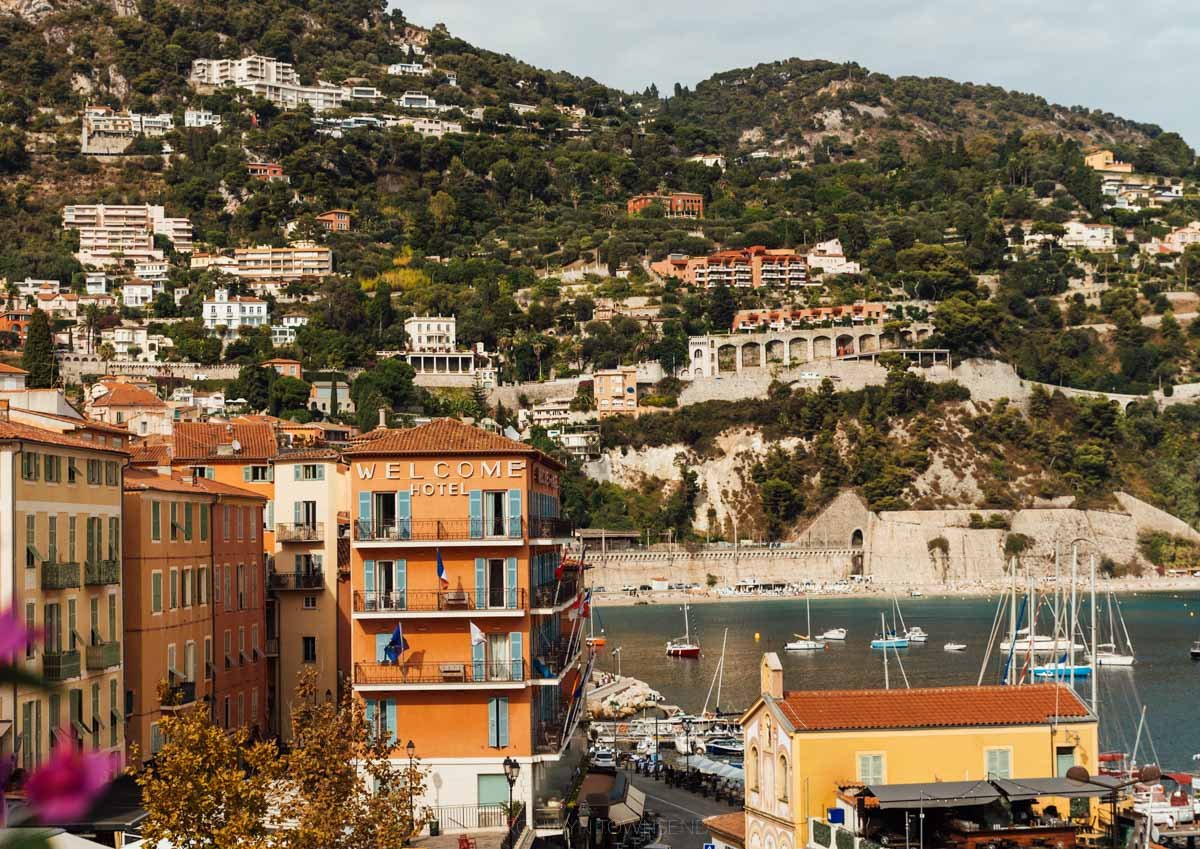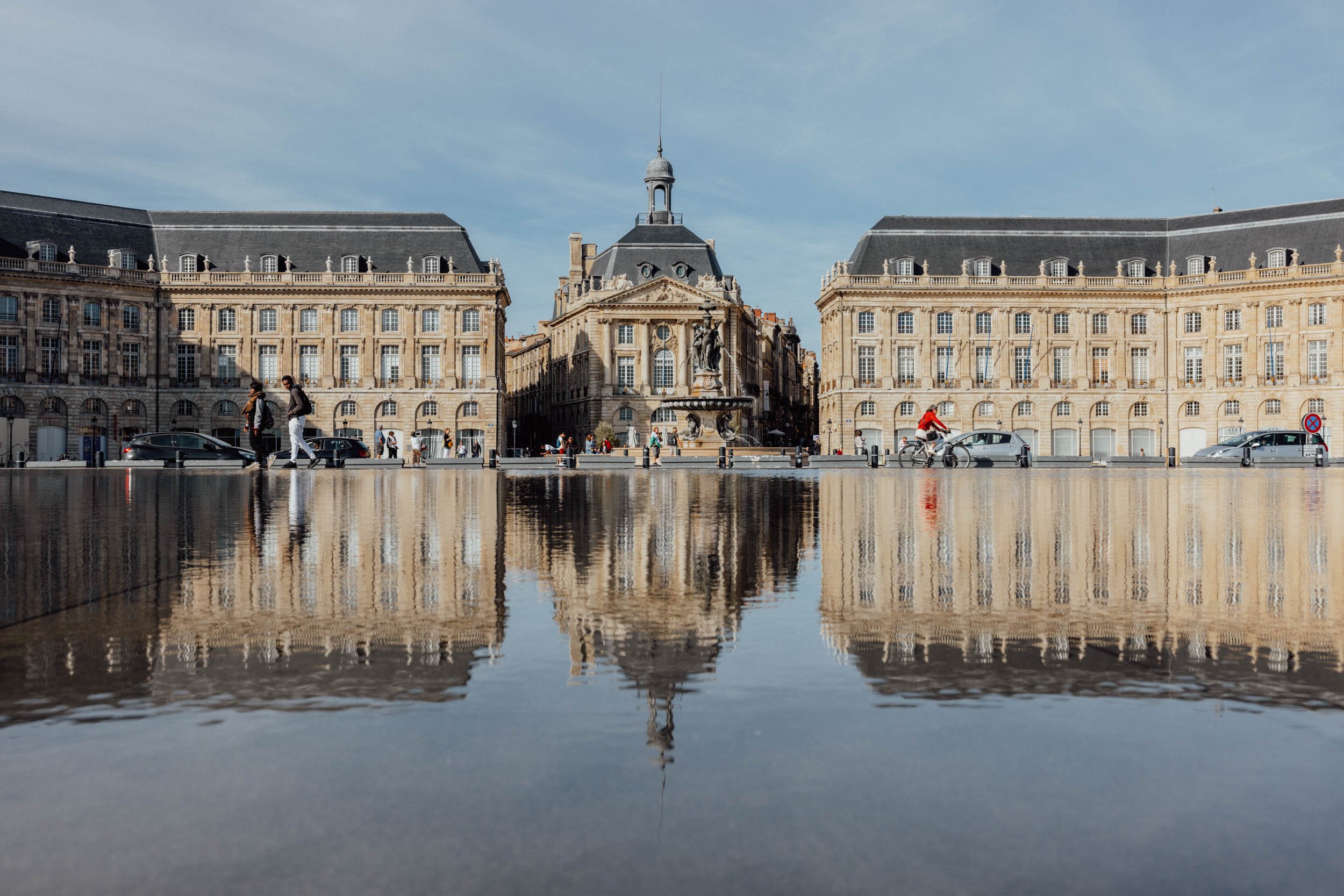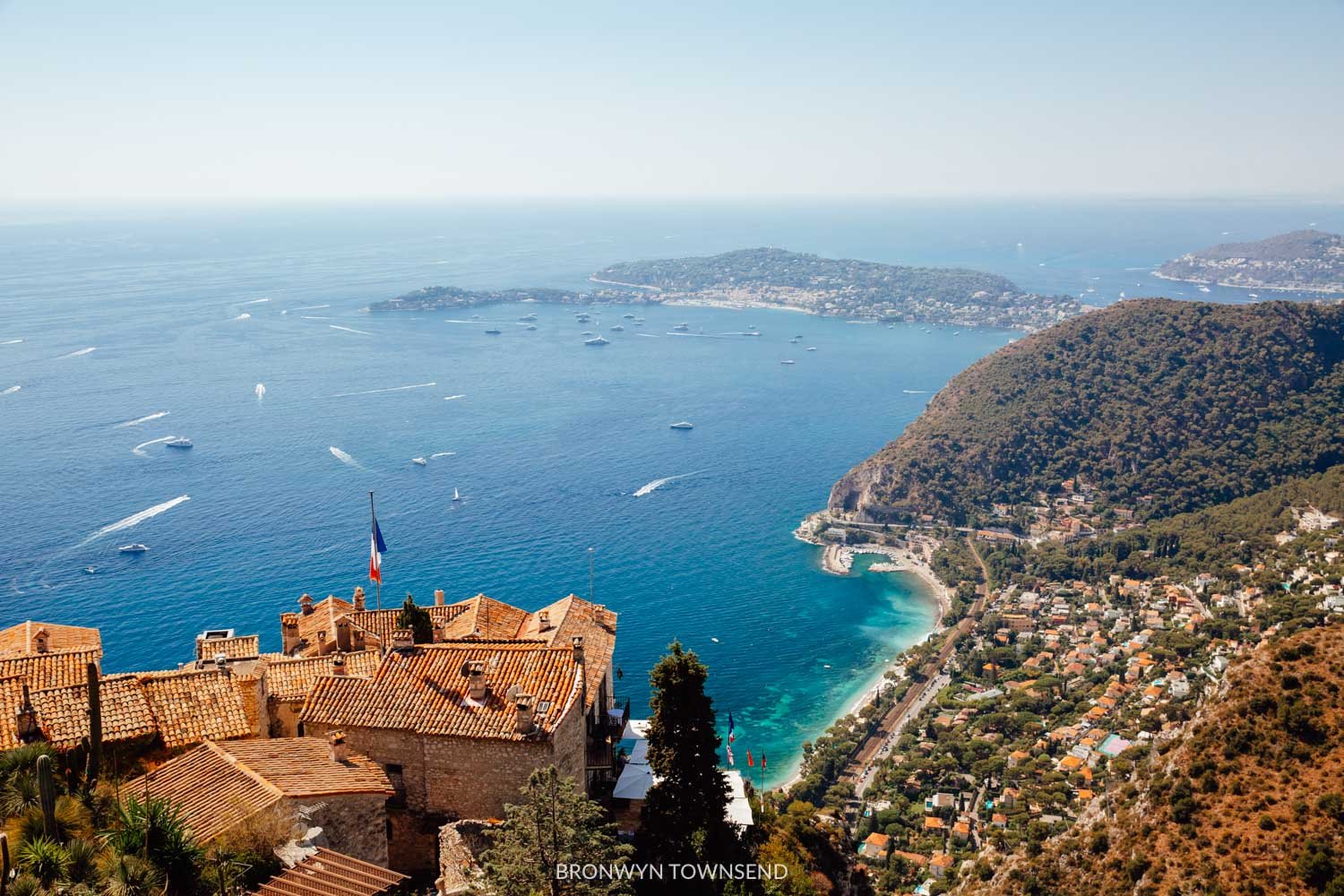17 Best Towns to Visit in the South of France
Colour palettes inspired by citrus fruit, laneways reminiscent of a bygone era, and idyllic beaches kissing the Med. The best towns in the South of France couple culture with couture, artistic enclaves find homes among historic quarters, and the region boasts a dining scene that’s not to be missed.
This post may contain affiliate links.
If you choose to purchase I may receive a small commission at no additional cost to you. By using these links, you are supporting the ability for me to continue creating content for this site and its running costs.
Southern France is home to some of the most exquisite towns and villages I’ve had the pleasure of visiting. From the grandeur of Bordeaux's neoclassical architecture to the kaleidoscopic colours of Menton and Villefranche-sur-Mer or the Roman ruins in Arles, there’s plenty to capture your imagination.
Some of the towns on this list below belong to the highly coveted ‘Les Plus Beaux Villages de France’, a selection of the country’s most beautiful towns. Other destinations on this list are technically cities, but we won’t let that keep them off here.
Whether you’re in search of inspiration for your sojourn in France’s Mediterranean corner or looking for more places to fill your South of France itinerary, this selection provides some of the best towns to visit. So without further ado, let’s get to it, shall we?
1 | Gordes
Gordes is a stunning hilltop village perched on the southern edge of the Plateau de Vaucluse in the Luberon region of Provence. Gordes has earned its place on the prestigious ‘Les Plus Beaux Villages de France’ - a list of France’s most beautiful towns. Thanks to breathtaking panoramic views of the surrounding countryside, cobblestone streets, and caramel-hued stone houses, it’s become a photography hotspot in the region.
Characterised by its well-preserved medieval architecture, including the 12th-century castle and the Renaissance-style Saint-Firmin Church, the town is postcard perfect. Market day is a much-loved affair, as is common throughout much of France, and visitors can wander through the narrow streets lined with boutiques, art galleries, and cafes after picking up some local produce or handcrafted goods.
Gordes serves as a gateway to the stunning landscapes of the Luberon Regional Natural Park, making it a popular destination for outdoor enthusiasts and nature lovers. We chose to spend a few days in Gordes, as it makes for an ideal base for visitors spending several days travelling around Provence. This quaint town has plenty of restaurants, is well-located for visiting nearby towns, and has excellent accommodation options.
2 | Saint-Remy-de-Provence
I absolutely adore Saint-Remy-de-Provence. Located at the base of the Alpilles mountains, this charming town is surrounded by lush landscapes peppered with vineyards and sunflower fields.
Saint-Remy-de-Provence is perfect for travellers looking for outdoor breaks in Southern France with hiking and cycling trails, as well as horseback riding excursions all available. Known as being home to one of the best markets in Provence, locals head here for the freshest produce from fresh summer berries to olives and cured meats.
Renowned for its delicious Provencal cuisine, Saint-Remy is a haven for food lovers. Wine bars, fromageries, and restaurants with a focus on fresh, seasonal produce filled the light stone streets and lanes. The town is also famous for its cultural heritage and has been a source of inspiration for many artists, including Vincent van Gogh, who spent a year at Saint-Paul de Mausole monastery and painted some of his most famous works here, including ‘Starry Night’ and ‘Irises’.
3 | Roussillon
Most famous for its ochre cliffs, Roussillon is just a short drive away from Gordes and makes for a stunning day trip. The rich pigment is what influences the warm, earthy tones that cover the buildings throughout this Luberon village, colouring facades in shades of red, orange, and yellow.
Like many of the towns spread throughout Provence, the history is tied to medieval roots. Ancient fortifications and churches are present throughout the town's architecture, while the surrounding landscapes are filled with lush green views and vineyards. Be sure to make the weekly market every Thursday morning.
4 | Moustiers-Sainte-Marie
If you’re visiting Verdon Gorge, you don’t want to miss visiting Moustiers-Sainte-Marie. Recognised as one of the most beautiful villages in France, the town is built into the limestone hillsides. A cascading waterfall runs through the centre of town, creating the two halves connected by a bridge towards the back of the town.
The village is dominated by the Notre-Dame-de-Beauvoir chapel, perched high on a rocky outcrop above the village and visitors can climb a stone staircase to reach it and take in panoramic views of the landscapes nearby.
If you’re a big fan of ceramics like I am, this is the perfect place to add to your collection. Moustiers-Sainte-Marie is famous for its traditional pottery and ceramics, which have been produced in the village for centuries.
5 | Aix-en-Provence
A popular base in Provence, Aix-en-Provence is home to one of France's oldest universities, Aix-Marseille University, which traces its roots back to the 15th century. The town offers a youthful charm that creates a more laid-back atmosphere than some of its neighbours but still holds onto its historical charm.
Adding to this is Aix’s reputation for arts and culture. The birthplace of the famous painter Paul Cézanne, the town has remained a fixture in the artistic scene. Aix-en-Provence is one of the best towns in the South of France for festivals and cultural events, including the prestigious Aix-en-Provence Festival, which celebrates opera and classical music.
The narrow streets and elegant architecture are much-adored by visitors to Aix. Cours Mirabeau, a tree-lined avenue lined with 17th and 18th-century mansions, cafes, and fountains is a firm favourite. Aix-en-Provence is a great base for travellers, especially those using public transport, as it has a train station connecting to other destinations throughout France.
Photo by Nadine at Le Long Weekend
6 | Avignon
Avignon is all about culture and ancient architecture. With roots dating back to 1st Century AD as an important Roman city, it also held significance as a seat of the Catholic Church in the 14th Century. Of the city’s interesting architecture, Palais des Papes (Palace of the Popes) is the creme de la creme. Designated a UNESCO World Heritage Site in 1995, it is one of the largest and most important medieval Gothic buildings in Europe.
Spend time in Avignon strolling along the Rhone River which runs through the city, and soaking up other architectural attractions including Pont d'Avignon and Cathédrale Notre-Dame des Doms. As a city with a vibrant entertainment and cultural scene, there are numerous museums, galleries, theatres, and festivals celebrating its artistic heritage. Avignon is also well connected via TVG train to destinations such as Nimes and Marseille.
Photo by Lasma Plone
7 | Arles
Built upon the banks of the Rhone River, Arles is a historic highlight in Provence. Best known for its well-preserved Roman ruins, vibrant arts scene, and association with the renowned artist Vincent van Gogh, Arles is a must-do for history lovers.
The UNESCO-listed Arles Amphitheatre (Les Arènes d'Arles), which dates back to the 1st century AD, is the most impressive of numerous Roman ruins located across the city. In more recent times, Arles is where Vincent van Gogh lived and worked for over a year in the late 19th century, painting more than 300 works including ‘Starry Night Over the Rhône’ and ‘The Yellow House’.
The art scene lives on in Arles which is home to Rencontres d'Arles, one of the world's leading photography festivals showcasing the work of emerging and established photographers from around the world.
Photo by Kim at Explore Your Bucketlist
8 | Cassis
Set in coastal Provence, Cassis is famous for its breathtaking Calanques, narrow inlets with steep limestone cliffs that plunge into the crystal-clear waters of the Mediterranean Sea. There are numerous hiking trails to take in views of the spectacular coastline or opt to see the rugged cliffs by boat instead.
The town's charming harbour is the focal point of Cassis. Flanked with colourful buildings, bustling cafes, and seafood restaurants, take the time to stroll along the waterfront promenade and watch local fishermen at work. Then, venture into the maze of narrow streets in the old town which is filled with Provencal architecture and boutique stores.
Wine enthusiasts will also enjoy exploring the nearby vineyards and wineries known for producing white and rosé wines, particularly the crisp and fruity Cassis AOC (Appellation d'Origine Contrôlée). Cassis is a great starting point for a Provence road trip before you head inland.
Photo by Lisa at Travel to Lyon
9 | Nice
The gateway to the Côte d’Azur, Nice seamlessly blends French and Italian culture - it was once part of Italy after all. Picture-perfect year-round, the sunny Mediterranean climes and old-world charm are intoxicating. Spend your days chilling on the pebbled beaches, sipping on some ice-cold rosé, or venturing out to explore the nearby towns and villages – there's so much to see and do.
Nice might be France's fifth-largest city, but don't let that fool you. It has a mix of luxury and just the right amount of grit that's been drawing tourists for centuries. Vieux Nice, the city’s old town, is full of brightly coloured laneways, al fresco restaurants, and shaded pockets to escape the midday heat.
Best of all, Nice makes for the perfect home base to explore the rest of the Côte d’Azur. With easy access to neighbouring towns and villages, whether you're exploring by car or hopping on public transport, you're in for some stunning day trips.
10 | Villefranche-sur-Mer
The scenic hamlet of Villefranche-sur-Mer is just a stone's throw from Nice and epitomises the allure of this coastal paradise. The sheltered cove framed by the vibrant hues of one of France's most colourful towns provides the perfect place for a day at the beach on long summer days.
Wandering through Villefranche-sur-Mer's cobblestone lanes reveals a kaleidoscope of yellow, peach, and pink facades, accented by mint green and blue shutters and doors. I adore the way Villefranche-sur-Mer marries the grandeur of chic French living with touches of Italy’s Ligurian coast - both in architecture and cuisine.
If you’re looking for a tranquil retreat on the Côte d'Azur, this is the place to be. During the summer months, the town buzzes with beachgoers, set against a backdrop of luxurious super yachts anchored in the idyllic cove, an ideal setting for leisurely strolls along medieval streets followed by sun-drenched afternoons by the sea.
11 | Èze
Èze is like something out of a fairytale. Jaw-dropping panoramic views, streets that wind up the cliffs, and cute little stone houses that seem to be stacked on top of each other. It's like stepping back in time to the medieval days, but with a modern artistic twist. During the day, it's buzzing with galleries and cafes, but come nighttime, it's wonderfully peaceful.
Perched about 400 metres above the sea, Èze village hangs onto towering cliffs overlooking the stunning azure waters of the French Riviera. You can almost feel the history in the air, with the remnants of old stone walls and medieval architecture adding to the charm.
Summer days here can get busy, but that doesn't take away from the beauty of the surroundings. The scenery is sensational; forests stretching from Cap Roux to Cabuel Point, with trees like carob, date, and citrus soaking up the sun year-round. Easily visited as a day trip from Nice, it’s a must-visit when in the South of France.
12 | Menton
Just a hop, skip, and a step away from the Italian border, Menton is like a burst of sunshine in town form. The town’s colour palette has been inspired by citrus fruits and you can see the influence of its Ligurian neighbours in every nook and cranny.
One of the best ways to admire the town is from the seafront pier, where you can soak in the whole spectacle. Menton isn't just easy on the eyes – it's also a playground for the adventurous. Whether you're splashing in the sea or wandering the colourful streets sampling the best lemon-inspired recipes, there’s plenty to keep you busy during those long summer days.
Art lovers should make a pit stop at the Jean Cocteau Museum. Housed in a 17th-century fort, it's filled with works from the film director and artist who had a soft spot for Menton. And when you need to cool off, head to Plage des Sablettes. With its white pebbled beach and colourful parasols, it's the perfect spot to unwind after a day of exploring.
13 | Antibes
Antibes’ cobbled streets and charming pastel facades adorned with blossoms create a scene straight out of a storybook. The ancient walled city buzzes with life, blending beach vibes with a touch of yachting prestige, making it one of my top spots on the French Riviera.
Sandwiched between Nice and Cannes, Antibes has seen its fair share of glitz and glamour, even once home to none other than Pablo Picasso himself. Today, his avant-garde influence still echoes through the narrow streets and paved patterns.
Wander through the old town's maze of boutiques, cafes, and restaurants for a taste of local flavour. Don't miss the lively Marché Provencal on weekends, where you can snag some of the freshest strawberries and most delicious peach jam I’ve ever had.
14 | Cannes
Best known as the host of one of the most prestigious film festivals this coastal retreat has become synonymous with glitz and glamour. Home to boutique hotels, upscale restaurants, and exclusive clubs, luxury is a constant in Cannes.
But don’t let that put you off visiting. Even if you aren’t staying the night, a day trip to Cannes promises stunning views of the Mediterranean Sea from the palm-lined waterfront promenade, La Croisette. Visitors can stroll along the promenade, enjoy a leisurely meal at a chic seaside restaurant, or relax on one of the city's pristine beaches.
Spend time in the old town, known as Le Suquet too. This charming district features narrow cobblestone streets, historic buildings, panoramic views of the city and coastline from the top of the hill, and the Musée de la Castre, housed in a former castle tower, features exhibits on art, history, and ethnography.
Photo by Stephanie at France Adventurer
15 | St. Tropez
St. Tropez has earned its reputation as a playground for the rich and famous, known for its glamorous lifestyle, stunning beaches, and vibrant nightlife. Rising to fame in the 1950s as it became the hotspot for celebrities and artists, this coastal resort town is a fan favourite in the French Riviera.
Like many of the towns along this stretch of coastline, its narrow streets and old town are the most revered areas. Spend your time wandering through winding alleyways, browsing chic boutiques, and admiring the colourful facades of the traditional Provençal houses. And when you’re done there, head to the beach.
Soak up the sun at Pampelonne Beach with its upscale beach clubs or head to the quieter shores of Plage de la Bouillabaisse for a place to unwind. And once the sun goes down, St. Tropez has a vibrant nightlife scene from cocktail bars to live music so you can dance the night away.
Photo by Michael Kroul on Unsplash
16 | Bordeaux
Bordeaux, nestled right in the heart of France's most famous wine country, sits pretty on the banks of the Garonne River. The city has earned the bragging rights to the world's largest urban World Heritage Site, and it’s apparent why once you’re surrounded by the neoclassical and renaissance buildings.
Wine is what the city is best known for, but the ancient roots of Bordeaux make it a treat for history buffs too. Coupling indulgent French cuisine with some of the world’s most renowned wines is what draws millions of visitors to Bordeaux annually. Nearby, you can visit the Atlantic coastline and windswept Pilat Dune.
What I love most about Bordeaux – it's got all the charm of Paris, minus the crowds and tourist traps. If you've got a couple of days to spare in this gem of a city, trust me, you're in for a treat.
17 | Saint-Emilion
Whenever I visit Bordeaux, I make sure to pay Saint-Emilion a visit. Not only is this wine-rich region full of verdant vineyards as far as the eye can see, but it’s also home to an exceptional collection of historical monuments. Easily visited as a day trip from Bordeaux, this is a must-visit town in the Southwest of France.
Saint Emilion has been wowing visitors for centuries, and it's not hard to see why. Picture this: a medieval town perched high on a hill surrounded by lush green vineyards and quaint cobbled streets. The limestone buildings, the terraced gardens, the vineyards – it's like stepping into a postcard.
Of course, wine is one of the main drawcards of this idyllic spot, but there are plenty of other things to do in Saint-Emilion. Take a stroll down those honey-hued limestone streets, gaze up at the towering church spires, and soak in the beauty of this hillside haven.
These are just a handful of the many incredible and charming towns that are dotted throughout southern France, and most are well-connected by public transport, making it easy to travel by France’s excellent train network.
Of course, a road trip through Provence in summer is a dream destination. A place where lavender fields turn the landscape purple and century-old plane trees line shaded streets. I recommend focussing on either the French Riviera or Provence if you have only a week to spend in this region, but if your itinerary affords you longer, then combine both destinations for the ultimate experience through some of the prettiest towns in the South of France.

























